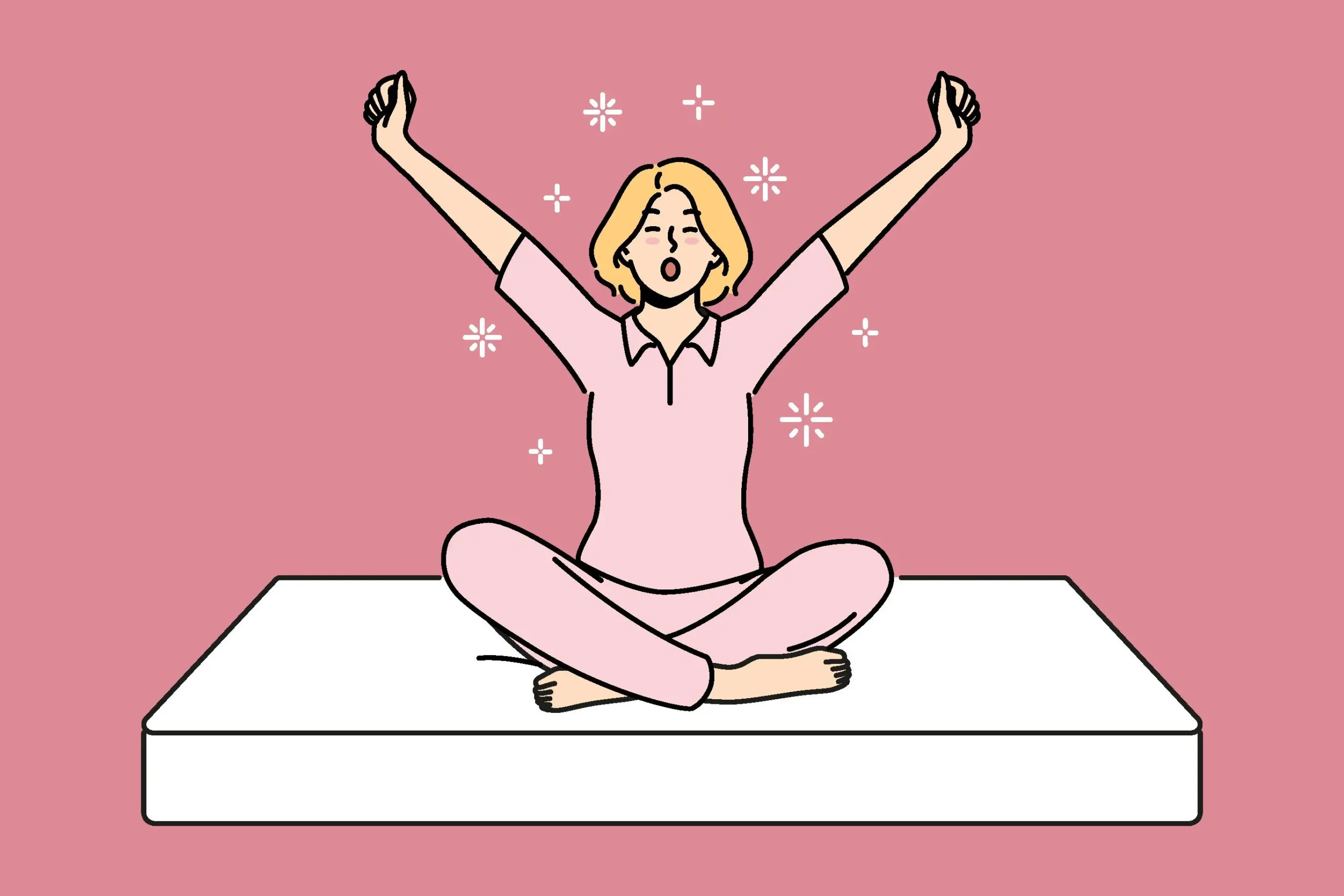Herniated discs and paralysis can occur at any time. It happens when the disc applies pressure to the spinal cord or the nerve roots. Suppose the herniated disc is in the cervical spine. In that case, it can cause paralysis of the arms or legs (paraplegia). If paralysis occurs in both the arms and legs, it is called quadriplegia. A herniated or even just a bulging disc in the cervical spine can cause aching, burning, numbness, weakness, and even paralysis of the arms. A herniated lumbar disc can cause the same symptoms in the legs, as well as bowel or bladder problems (incontinence).
Table of Contents
ToggleWhat is a Vertebral Disc?
The discs in the spine enable the spine to bend, flex, and rotate by acting like a thick rubber washer between the vertebrae. The disc also creates space between the bones in the spine, allowing the spinal nerves to exit without any pressure.
The disc is similar to a jelly doughnut. It has a thicker outer layer with a “jelly” center (nucleus pulposus) and a fibrous outside (annulus fibrosus). The annulus is made of many layers of tissue that “crisscross” like the layers in a sheet of plywood. When the disc is forming, two areas on the posterior part of the disc have blood vessels feeding the nucleus. The blood vessels will shrink in our late teens, leaving a “weak spot.”
Combined with a narrower ligament at the back of the disc (posterior longitudinal ligament), it increases the possibility of injury. The PLL is exceedingly narrow in the lumbar spine, which is why herniated discs are more common in the lower back.
Herniated Disc and Paralysis: Herniated Disc L5 – S1
Lumbar L5-S1 disc herniation is a common issue that can cause pain, numbness, and weakness. The lumbar region is the last five vertebrae at the bottom of the spine. The L5-S1 disc is the bottom disc, supporting all the segments’ weight.
What is the Lumbar Spine?
Five vertebrae make up the lumbar spine and are numbered one through five. The “lumbars” support the upper body and allow movement in the lower body. The L5-S1 disc is between the L5 vertebra (in the lower back) and the S1 vertebra (in the pelvis).
Also known as the lumbosacral joint, it is the transition point between the lumbar spine and the sacrum. Within this region, the curvature of the spine changes from a forward curve (lumbar lordosis) to a backward curve (sacral kyphosis).
L5 – S1 carries the most support and movement, making this area more prone to injury. The L5-S1 also helps transfer loads from the spine into the pelvis and legs.
L5 and S1 Vertebra
The L5 and S1 are built very differently. L5 consists of a vertebral body in front with an arch in the back with three bony protrusions (raised spots). The bony protrusions include the “spinous process” that sticks out in the back. There are also two “transverse processes” that stick out on either side. These areas develop because of tension on the bone where different muscles in the back attach. Any bony area with muscle attachment is naturally bigger and denser because of Wolf’s Law. The bones respond to stress by adding mass and density.
The S1 segment is called the “sacral base.” The sacrum is shaped like an upside-down triangle and, when first developing, is made of five different segments. As we age, the segments fuse, but we still refer to them as S1 through S5. S1 is the top segment with wing-shaped bones (alae) on either side. Along the posterior side (back), the sacrum has several bony “bumps” that make up the “median ridge.” This ridge includes bony openings (foramina) on both sides. The L5 and S1 are joined by the lumbosacral facet joints lined with articular cartilage.
L5-S1 Intervertebral Discs
These discs are soft tissue joints composed of a hydraulic gelatinous core called the nucleus pulposus, encased within a firm outer collagen wall called the annulus fibrosus.
The discs protect the spinal vertebrae and nerves from sudden impact. They also absorb shock from spine movements like bending, twisting, and jumping.
L5-S1 spinal nerve
The L5 spinal nerve roots exit the spinal cord through intervertebral foramina (small openings) on the right and left sides of the spinal canal. These nerve roots combine with other nerves to form bigger and larger nerves that extend down the spine and travel down each leg.
How Common Are Herniated Discs and Paralysis?
A thoracic disc herniation, in which a complete paralysis below the waist develops, is the most severe complication. As a result, a fragment of disc material can become lodged within the spinal canal. When there is pressure on the spinal cord or spinal nerves, it can cause permanent damage to the nerves that run to the lower body and legs.
A herniated disc can cause paralysis or feeling loss in the legs because it can push on the spinal cord. An untreated herniation can cause severe nerve damage, requiring surgery to remove the disc fragment and repair the spinal canal. If you are experiencing any of the following symptoms, it is critical to consult a physician as soon as possible.
Vomiting or nausea is sometimes accompanied by vomiting when there is severe pain for an extended period. It’s challenging to do things. The legs move as you move them. If you have a herniated disc, consult a doctor immediately. Untreated disc herniations can cause severe nerve damage, requiring surgery to remove the disc fragment and repair the spinal canal.
Can A Herniated Disc Cause You To Not Be Able To Walk?
People usually do not experience any pain or symptoms from the actual disc herniation. A “slipped disc,” on the other hand, can cause significant pain, weakness, and difficulty standing or walking. However, “slipped” doesn’t accurately describe what happened. The disc does not go anywhere. It is inflamed and puts pressure on the spinal cord or nerves. The inflammation results from either an acute injury or chronic irritation from repeated activities with poor ergonomics.
A herniated disc occurs when the nucleus at the center of the disc pushes backward into the spinal canal. The center of the disc escapes through a tear or rupture in the annulus. Herniated discs are the least common in the thoracic spine. The ribs attach to the thoracics, limiting motion.
The symptoms of herniation vary greatly depending on its position and size. Acute sciatica, as the name implies, is pain, burning, and numbness that radiates from the buttocks to the leg and sometimes into the foot. Cervical radiculopathy results from nerve compression in the neck. Typically, herniated discs respond best when treated conservatively and non-surgically. A thorough examination by your doctor may indicate that conservative treatment options, such as chiropractic adjustments and medication, do not alleviate or eliminate the pain.
What Treatments Help Herniated Discs and Paralysis?
Chiropractic adjustments, ice and heat therapy, acupuncture, ultrasound, and electrical muscle stimulation are all possible options. In addition to physical therapy, treating pain with pain medication and muscle relaxants may be beneficial. If you are having difficulty with your neurosurgical operation, consult your surgeon. We make no representations of whether the information we provide is appropriate for medical purposes.
A disc herniation is a condition in which the disc bulges, putting pressure on a nerve. When the nerve is damaged, it can result in numbness in the lower extremities or even loss of bowel control. Herniations of discs are severe conditions that require immediate treatment.
What Happens If You Don’t Treat Herniated Discs and Paralysis?
Untreated herniations can cause sharp pain, partial paralysis, and even bowel and bladder incontinence. Sitting in an uncomfortable position for an extended period is one of the most common causes of back pain. It can also be a sign that something serious is going on. When a herniation puts pressure on a spinal nerve, aching, burning, numbness, tingling, or weakness can occur. The areas where these symptoms occur are related to the spinal level where the herniation occurs.
Because the disc is considered soft tissue, an injury to a herniation is an example of soft tissue injury. Failing to treat acute back pain can result in a disc herniation. Chronic pain may also become another condition that necessitates treatment. When a disc herniation puts significant pressure on a nerve, it can cause substantial damage if it shuts down nerve impulses. If you need medical attention immediately, your spine specialist can provide non-surgical treatments. The orthopedic surgeon can assess your back pain at any stage, and they can guide you on your way to healing.
If surgery is your only option, doctors may try to remove the herniation through a discectomy, a type of surgery. You may experience pain after this surgery because you must stay in the hospital overnight. People with a positive outcome tend to return relatively quickly to their regular routines.
If you have a herniated disk, you should consult your doctor about whether surgery is viable. Many different options are available, each with its unique set of circumstances. Surgery is not the only option; other treatments may be more effective. If you are considering surgery, you must consult your doctor to make an informed decision about your health.
Walking Problems From Herniated Discs and Paralysis
Due to a herniation of the lumbar disc in your lower back, you may experience numbness and tingling in your feet (called sciatica), down one or both legs, or even into your buttocks. The pain from a herniated disc can present as “electric shocks,” numbness, or weakness, regardless of whether you stand, walk, or sit.
Herniated Disc? Don’t Stop Walking!
It is critical to consult with a doctor if you have any pain while walking. Suppose you have a herniation of the disc in your back. In that case, you may still be able to walk daily, which can help you maintain your overall mobility and function.
A herniated disc can cause muscle weakness, reduced motor function, and decreased walking ability. However, daily walks can help maintain overall mobility and function. If you have pain or difficulty walking, consult a doctor before continuing.
Herniated Disc Emergency Symptoms
In the severe case of herniated disks and paralysis, the pain and discomfort can make it impossible to function. Dangerous symptoms of a herniation include back pain radiating to the legs or arms. Contact your doctor immediately if you have a bladder or bowel control loss.
A herniated disc is sometimes called a ruptured disk. It can occur when you use your back muscles instead of your legs and thighs to lift heavy objects. Excess body weight strains the discs in your lower back. Smoking can also affect the disc’s health, causing it to degenerate more quickly. Over-the-counter pain relievers like as acetaminophen, ibuprofen, and naproxen can help relieve back pain but will only mask your pain.
There is a herniation of one of the rubbery disks (disks) that sit between the bones (vertebrae) in your spine and cause tension between them. Herniated disks may cause pain, numbness, and weakness in the arm or leg, depending on the disk type. Fortunately, surgery is not required to resolve most disk problems. Disks become less flexible as people age, causing them to tear or crack. When working with heavy objects, the back muscles are sometimes used instead of the legs or thighs, resulting in herniation of the discs. In rare cases, it may be necessary to undergo emergency surgery to avoid permanent weakness or paralysis.
Thoracic Herniated Discs and Paralysis
The thoracic disc is a little smaller than the lumbar disc. The bones get progressively smaller as we look at them. This is partly because the bones in the spine support less body weight as they go upward (superior). A thoracic disc herniation carries all of the dangers of a lumbar disc herniation, with the main difference being the affected areas of the body.
The patient should be familiar with the various parts of the thoracic spine. A disk is a cushion between each vertebra of the spine that cushions the spine from shock. The outer fibers of a herniation (the annulus) are damaged, and the disc becomes inflamed. A disc can rupture from a small amount of force if the annulus weakens. In general, aging causes disc herniation in the thoracic spine. Pressure is exerted on the nerves when the disc bulges and encroaches on the spinal canal from the nucleus pulposus.
This procedure removes a small amount of the vertebral body and the problem disc. A video-assisted thoracoscopy (VATS) uses a miniature TV camera to view an injured disc in the chest cavity. When removing a large section of bone and disc material, that area of the spine can become loose or unstable. A doctor may fuse the bones above and below the damaged disc if necessary.
There is often a debilitating pain that radiates down the legs due to herniation. You may be unable to stand or sit in the same position for an extended period due to the severity of the pain. It is also possible that numbness or tingling will impair your ability to function.
Treatments for Herniated Discs and Paralysis
Chiropractic can help relieve the pain of herniated discs and paralysis. During your initial visit, we will review your injury history. It is possible to have the symptoms of a herniated disc (pain, numbness, and weakness) without actually having a herniation.
First, we will look at your spinal posture, noting any imbalances. Next comes a physical exam, including specific orthopedic and neurological tests, to determine exactly how bad your injury is and what is causing your symptoms. Some of the things we want to find out during your exam include:
- Are your reflexes working? A disc herniation can pressure a nerve, preventing your reflexes from working. A common example of a reflex test is tapping the knee with a small reflex “hammer” to see if the leg jerks.
- Have you lost strength or muscle size? When muscles don’t get consistent signals from the nerves, they can begin to atrophy (shrink). This causes weakness and a loss of muscle mass.
- Do you have areas of numbness? Numbness or loss of sensation is another classic symptom of a herniated disc, just like loss of strength. If pressure is on a nerve, it can affect the signals that send information to the brain.
Will an X-ray Show Herniated Discs and Paralysis?
If your exam suggests herniated discs and paralysis, the next step is to take x-rays. While an x-ray won’t show an actual disc herniation, it will show the condition of your spine and help determine if arthritis is the cause of your pain. MRI studies are the best way to determine the cause of your radiating pain, but they can be expensive and require additional appointments at a radiology center. Unfortunately, getting an MRI and its results can sometimes take several days or weeks. Our office has digital x-ray technology that allows us to see the cause of our pain that same day
After carefully reviewing all of this information, we can determine if your symptoms result from a herniated disc. Your exam results and x-rays help Integrative Health and Rehab doctors determine the best treatment for your specific condition.
If we feel that you could benefit from treatment in our office, we have many treatments available. Chiropractic adjustments, acupuncture, dry needling, and laser therapy can all help reduce pain, muscle spasms, and inflammation, helping you to be pain-free ASAP!
Where Should You Go To Treat Herniated Discs and Paralysis?
Whether you think you may have herniated discs and paralysis or just “plain old” neck pain, back pain, or headaches, request an appointment with one of our chiropractors today! Our affordable Chiropractic office is conveniently located for patients in Arvada, Denver, and Wheat Ridge, Colorado. Still not sure? Looking for a Chiropractor in Denver? Check out some of our 5-Star Google reviews to learn why we are the chiropractor Denver seeks for fast, effective, and lasting pain relief.

Ready for an expert opinion? Get in touch today!
With a legacy of more than 25 years, our team specializes in helping individuals triumph over back pain, neck discomfort, and persistent headaches, all without relying on addictive medications or risky surgical procedures.







